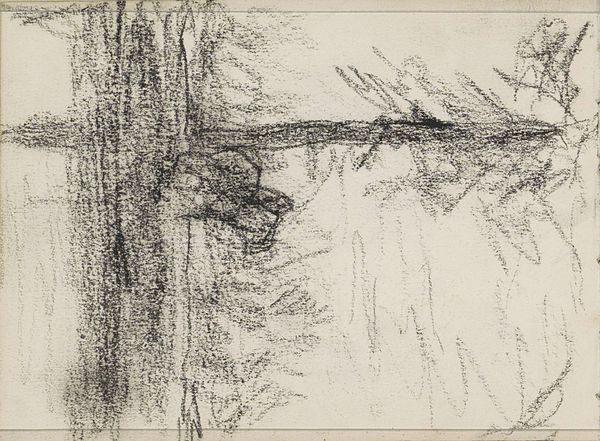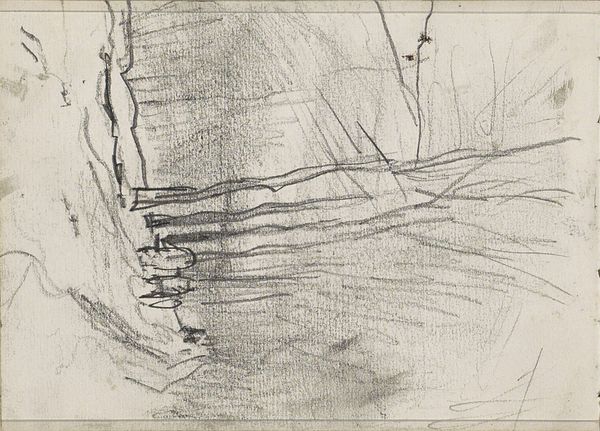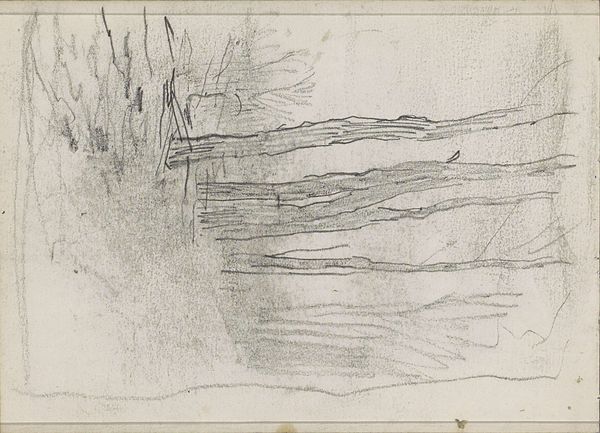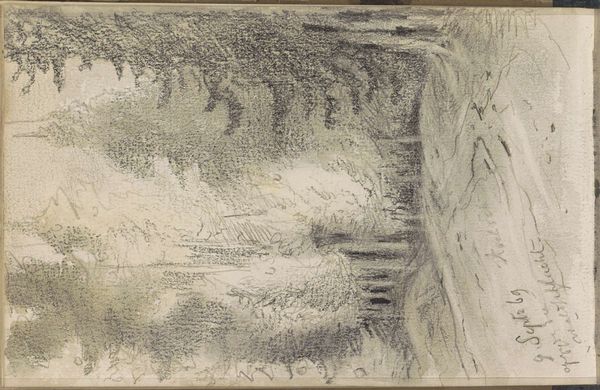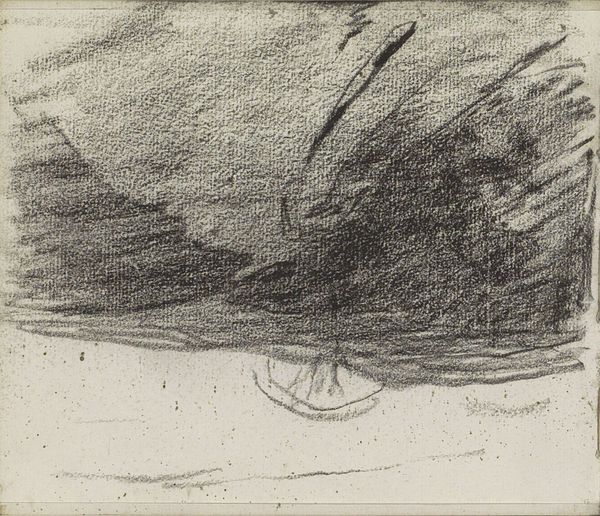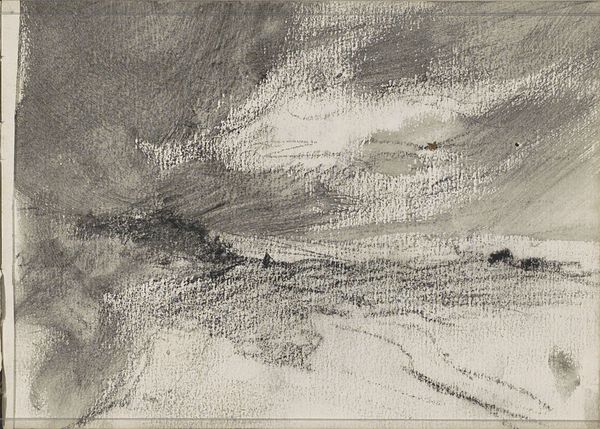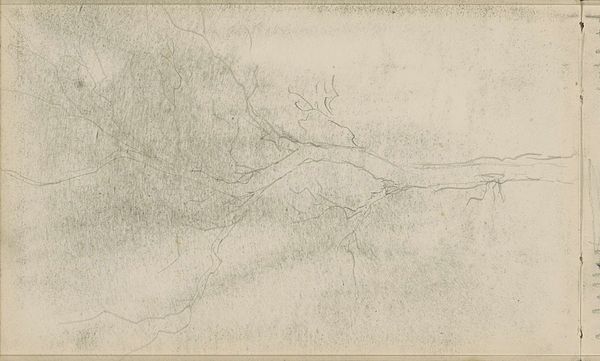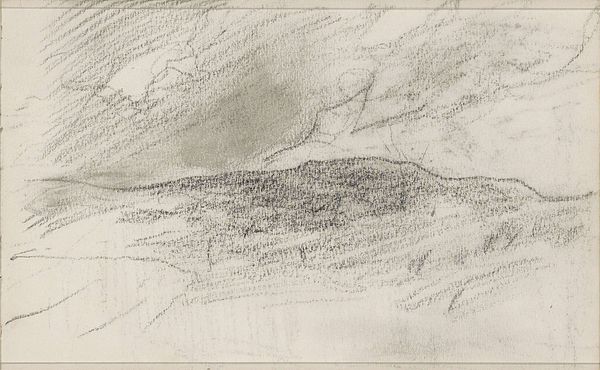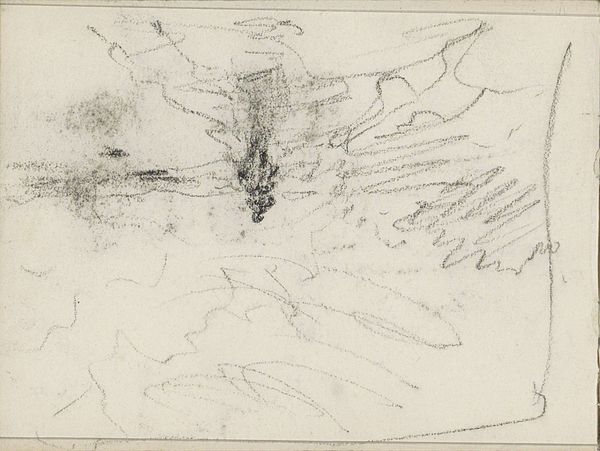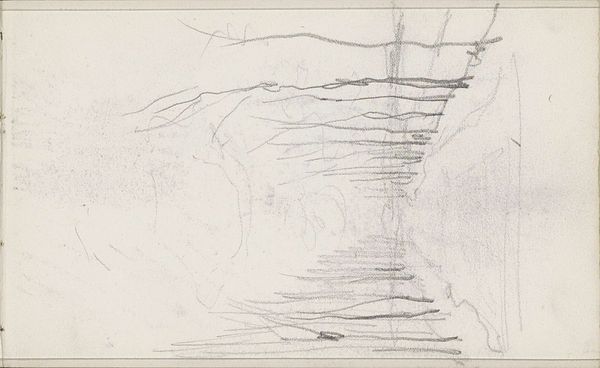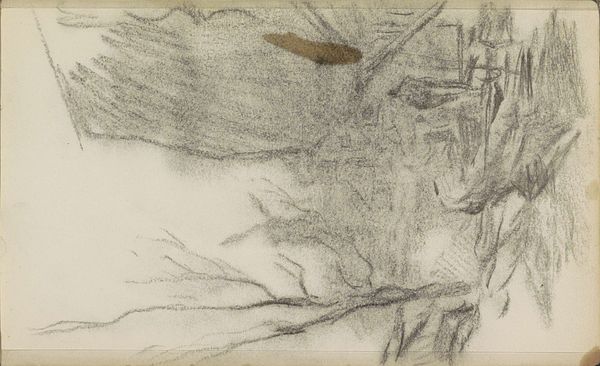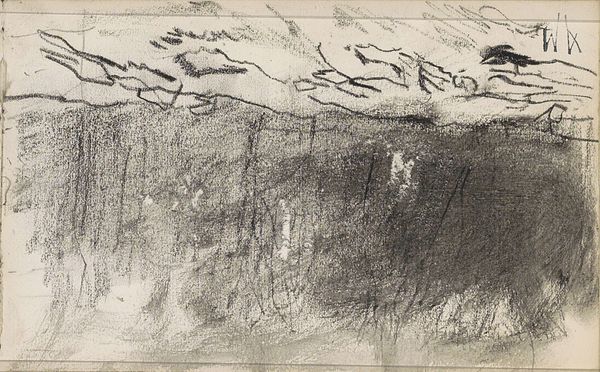
drawing, pencil, charcoal
#
pencil drawn
#
drawing
#
pencil sketch
#
landscape
#
charcoal drawing
#
pencil drawing
#
pencil
#
charcoal
#
realism
Copyright: Rijks Museum: Open Domain
Curator: This is "Landschap met bomen," or "Landscape with Trees," a drawing attributed to Anton Mauve, likely created sometime between 1848 and 1888. It's currently held here at the Rijksmuseum, and it's rendered in pencil and charcoal. What are your first thoughts? Editor: Ethereal. It’s like looking at a memory fading at the edges. The contrast between the wispy branches and that dense, charcoal mass on the right—it gives it a real sense of melancholy. Curator: That’s a fascinating observation. The use of charcoal and pencil, combined with Mauve's technique, certainly evokes a particular atmosphere. Looking at the starkness of the tree against that shrouded background, do you find that contrast adds any symbolic weight? Editor: Absolutely. For me, that tree becomes a symbol of resilience, standing its ground against an encroaching… well, something. Loss? Oblivion? The heavy shading behind it feels almost ominous, as if swallowing light. I'm reminded of how we tend to forget little by little all things that surround us. Curator: It’s compelling how you interpret that darkness. The symbol of trees in art, throughout history and across cultures, often suggests a connection to life, growth, and interconnectedness, but also mortality. The stark realism is certainly subdued by a haze that transcends literal landscape. Editor: Exactly. It transcends realism. If I were to paint this picture, I'd have used a very subdued palette of colours; mainly grayscale colours as well as light tints to produce such result. The interesting question is also if there’s intentional symbolism or whether Mauve simply was in love with a dark, stormy weather or had other more prosaic reasons to prefer those hues and that atmosphere. Curator: Regardless of the artist's intent, the cultural interpretation speaks volumes. Mauve's exploration of light and shadow is prevalent. Editor: Agreed. What is fascinating for me is how timeless this piece feels despite being created between 1848 and 1888. I still think it captures something very human and resonant, despite the materials or style of the art movement itself. Curator: It's a testament to the enduring power of art to transcend its temporal origins and resonate with human experiences across time, even now. Editor: Beautifully said. I’m walking away feeling rather pensive. It has made me thinking that is time to grab a cup of hot tea.
Comments
No comments
Be the first to comment and join the conversation on the ultimate creative platform.

